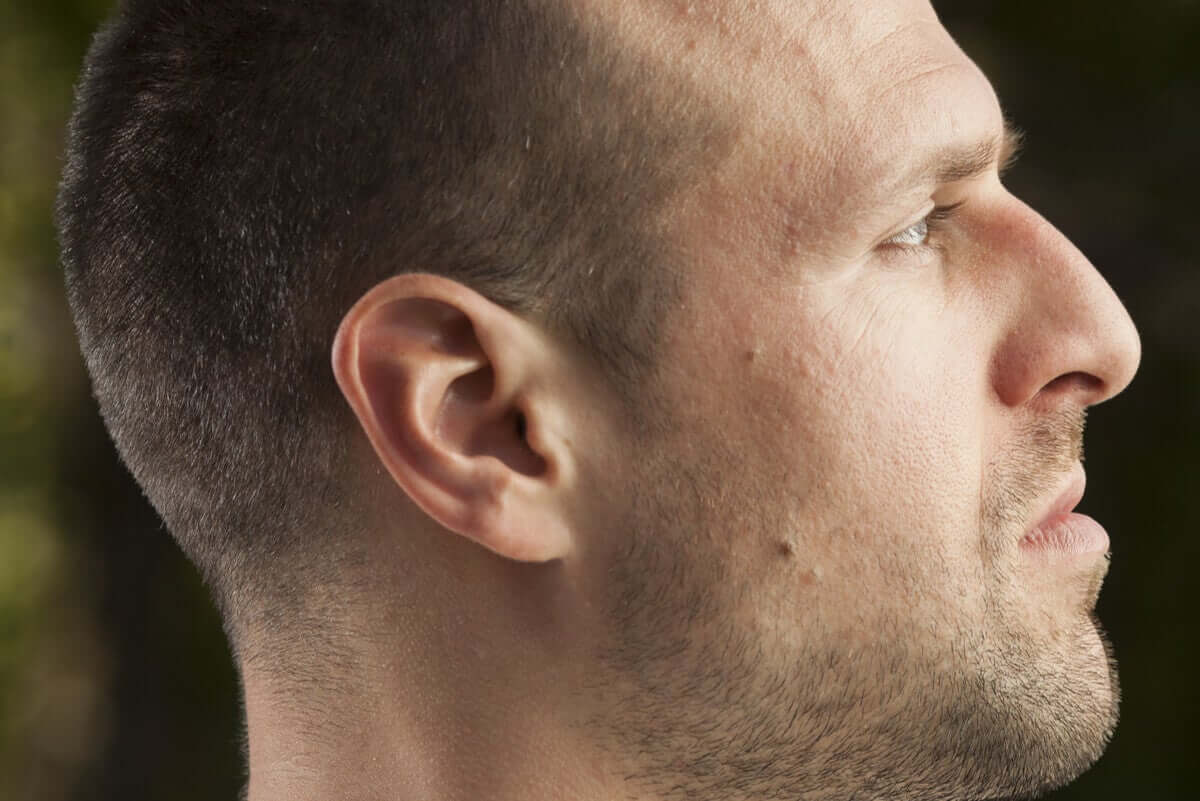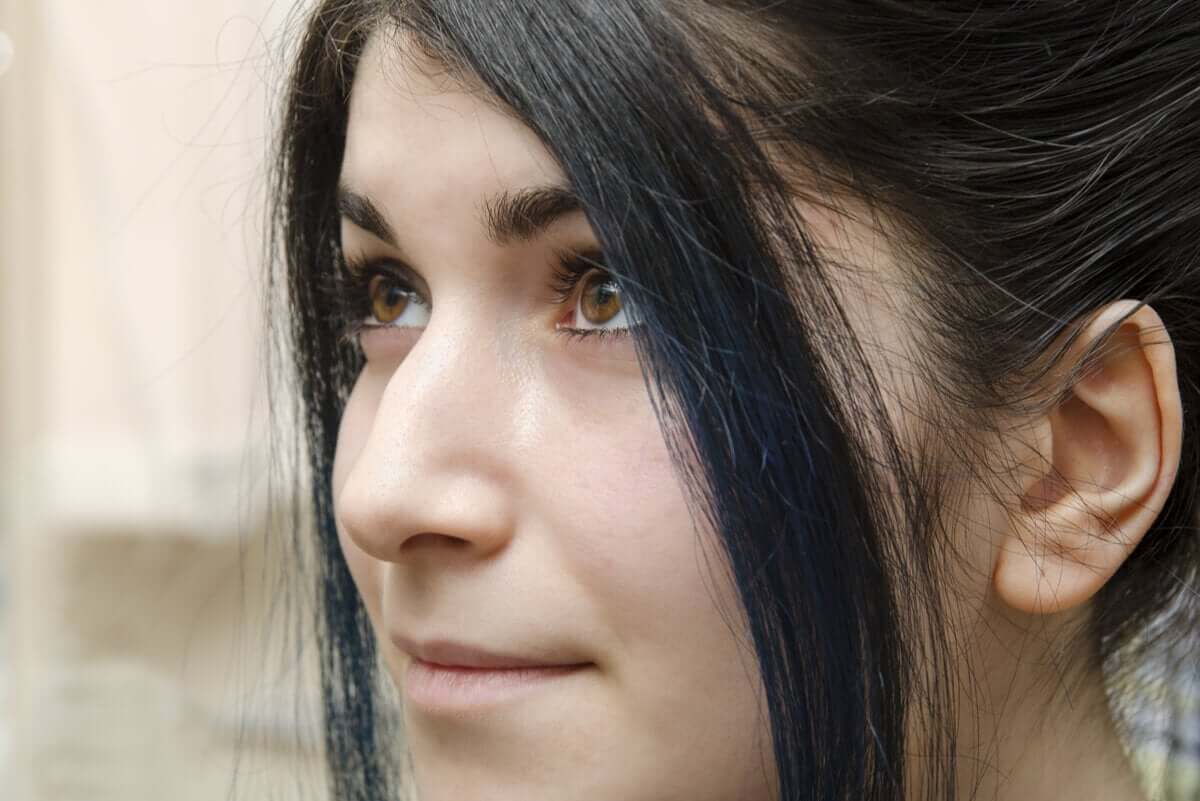The Different Types of Nose Shapes: What’s Yours?


Reviewed and approved by the nurse Leidy Mora Molina
From an aesthetic standpoint, the center of the face is very important for the harmonization of facial features. This is why, to a large extent, people’s faces depend on the types of nose shapes.
Of course, beyond that, the nose allows you to breathe, perceive odors, and holds glasses up. In this article, we’ll focus specifically on the types of nose shapes.
Do you know what type you have?
The different types of nose shapes
As with the rest of the facial features, each person’s nose is different and has different characteristics. For this reason, we can say that, even though they’re all different, they always harmonize the face.
Now, the anatomical design of the nose is basic: the nostrils or nasal cavities that air passes through, two nasal fins that cover these cavities, the septum, and the tip. These, in turn, are the elements that determine the types of nose shapes.
However, there can be many differences between one nose and another. Noses vary according to the shape of the bridge, height, width, and opening of the nasal cavities, among other aspects. This makes it possible to classify them into large groups, according to their general shape.

Keep reading: What is Septoplasty and What Does it Entail?
Flat or snub nose
A flat nose is characterized by having a short sunken bridge. The nostrils are extended to the sides. Also, the tip is flat.
It gets its name because it has a sunken or flattened appearance from the side. In other words, the nasal appendage doesn’t protrude much from the face.
Flat or snub noses are common in populations with yellow and black skin tones. In Asians, it’s less wide than in people with African features.
Upturned nose
Unlike the previous one, an upturned nose has a protruding tip. The septum is usually straight, although it curves a bit towards the end. Therefore, the nasal cavities seem to point forward.
This type of nose is common in people from Northern Europe. Nevertheless, it also predominates in other population groups. This type of nose resulted from an adaptation to allow people to breathe cold air better.
From the side, upturned noses seem pointed, like those of some comic book characters. It’s one of the most requested nose shapes in rhinoplasties. However, we need to point out that not all faces harmonize in the same way.
Read on to learn more: Areas of Your Face that May Reflect Possible Health Issues
Types of nose shapes: Wide nose
The distinctive feature of a wide nose is a constant widening from the straight septum to the tip. Famous basketball player Lebron James has this type of nose shape.
The nasal fins are dilated, as are the nasal cavities. It’s also called Nubian nose because it’s common in African Americans, East Asian, and Hispanic ethnicities. It’s also common in other North African populations, including Sudan, as well as African Americans.
Aquiline, or Roman, nose
An aquiline nose has a high, long, and prominent bridge. The septum curves inward at the tip. This is why it’s also known as a hook nose since it resembles a bird’s beak. It’s most noticeable from the side.
It’s characteristic of certain Southern European ethnic groups (Spain, Italy, France, and Portugal). Also, it’s common among the Arabs and the regions that at some point were occupied by them in the past, as well as in Slavic peoples.
Grecian nose
A Grecian nose is balanced in its proportions. The bridge is straight, the septum barely protrudes, and the nostrils are small. Thus, the nasal fins don’t dilate much. It’s the perfect complement to the so-called Greek profile.
You can observe this type of nose shape in classical Greco-Latin pictorial and sculptural works. This type of nose shape predominates, although not exclusively, in the European countries of the Mediterranean Basin.
Types of nose shapes: Bulbous nose
As its name implies, this nose looks like a bulb. It has a round, wide nasal tip. In fact, the nasal fins don’t stick out that much.
Of course, the rounded or ball-shaped tip is noticeable, as well as the enlargement of the part that surrounds the nasal cavities. This type of nose shape is common in people with black skin, in African-descended people, and mixed-race Americans.
Small nose
A small nose looks upturned. It’s much shorter at the bridge and septum. It can be rounded at the base. Also, it generally isn’t very wide and has small fins and tiny nasal cavities.
The distance from the arch of the eyebrows to below the nostrils is short compared to the other types of nose shapes. This is why it looks so small on a person’s face.
Types of nose shapes: Big and thick nose
This nose occupies a big part of a person’s face. It can be proportionate, aquiline, or with large nasal fins, with a rounded or bulbous tip.
This type of nose is noticeable from the side, but also the front. The famous literary character Cyrano de Bergerac is an emblematic case of a person with a big and prominent nose.
This type of nose doesn’t predominate in a particular population group. Nevertheless, it’s less common among Asians and North Europeans.

Uneven, crooked, or asymmetrical nose
Some people’s noses may be somewhat uneven. One side is different from the other. It can also resemble a curve in the shape of an S when seen from the front. The unevenness or asymmetry may have been caused by trauma.
Actor Owen Wilson has this type of nose.
Varied noses
The nose is the part of the face that attracts the most attention. Each of the types of nose shapes is different and very personal. However, not everyone is satisfied with their nose. This is why many people consider getting a rhinoplasty as an option to improve or change the shape of their nose.
However, the need for a surgical procedure may also be due to a health problem, a deviated septum, or a congenital malformation.
Generally speaking, the shape of the nose reflects many things. For example, our ancestors, culture, and geographic location. In fact, the types of nose shapes can also tell us who we are and where we come from.
All cited sources were thoroughly reviewed by our team to ensure their quality, reliability, currency, and validity. The bibliography of this article was considered reliable and of academic or scientific accuracy.
- Hübner M, Ramírez R, Nazer J. Malformaciones congénitas. Diagnóstico y manejo neonatal. Santiago de Chile: Editorial Universitaria, 2005.
- Ruiz L, Latarjet M. Anatomía humana. Buenos Aires, Editorial Médica Panamericana, 2008.
- Tamarit JM, Ferrandis E, García-Parrado L, Dalmau J. Nariz y sociedad: curiosidades y anécdotas sobre el apéndice nasal. Therapeía; 2012, 4: 55-68.
- Vargas H. Rinología. Fisiología de las Fosas Nasales [En línea]. Universidad Nacional Mayor de San Marcos, 2014. URL Disponible en: https://sisbib.unmsm.edu.pe/BibVirtualData/Libros/Medicina/cirugia/Tomo_V/archivos%20PDF/7Rinologia.pdf
- Bagheri S, Khan H, Cuzalina A. Rhinoplasty: Current therapy, an issue of oral and maxillofacial surgery clinics. Filadelfia: Elsevier, 2012.
- Uzun A, Ozdemir F. Morfométrica análise de nasais formas e ângulos em adultos jovens. Brazilian Journal of Otorhinolaryngology; 2012, 80(5): 397-402.
This text is provided for informational purposes only and does not replace consultation with a professional. If in doubt, consult your specialist.








